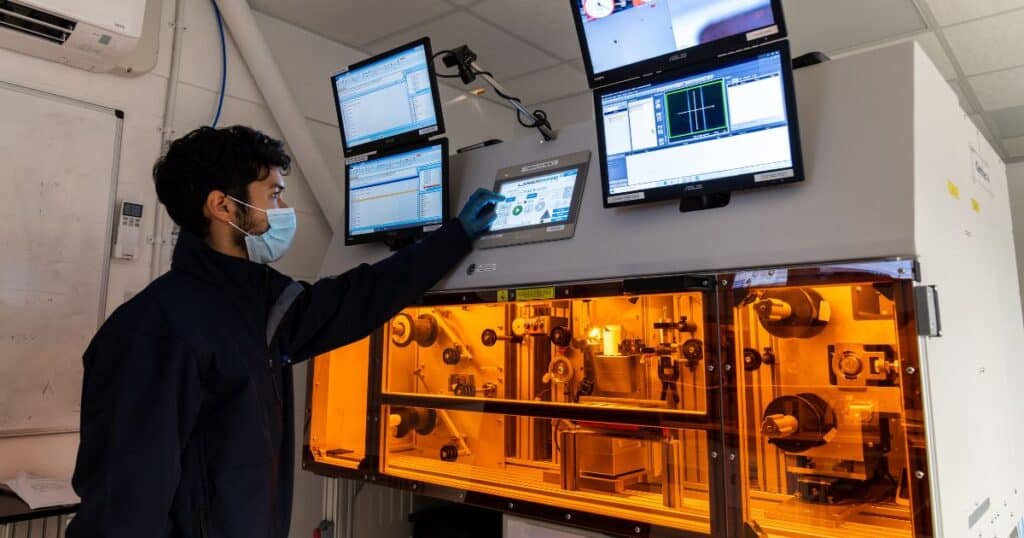Wearable technology is rapidly expanding across industries that include consumer electronics, healthcare, sports performance, vision technology, and advanced textiles. Behind every small wearable device is a network of ultra thin wires that carry power, data, and sensor readings. To prepare these wires safely and accurately, manufacturers rely on laser wire stripping for wires in wearable devices, a technique that creates clean and consistent insulation removal without direct contact.
This method is ideal for modern consumer wearables such as smart glasses, smart rings, fitness trackers, AR or VR headsets, and hearables. It is equally effective for medical wearables like ECG sensors and glucose monitors where accuracy is mission critical. In this article, we explore how the technology works, its advantages, and why it has become essential for the next generation of wearables.
Introduction to Laser Wire Stripping Technology
What Laser Wire Stripping Means
Laser wire stripping is a non contact process that uses controlled laser energy to remove insulation from electrical wires. Instead of pulling or cutting insulation with blades, the laser vaporizes the coating without touching the conductor.
How Laser Energy Removes Insulation
The laser wavelength is selected so that the insulation absorbs the energy while the conductor reflects it. This creates a highly controlled ablation effect that leaves the metal core smooth, shiny, and completely undamaged.
Why Wearable Devices Need Highly Accurate Wire Processing
Increasing Miniaturization of Wearables
Wearable devices are getting smaller every year. Smart rings, smart glasses, smart earbuds, and micro medical sensors use wires that can be thinner than human hair. These tiny wires cannot tolerate the physical stress of mechanical or manual stripping tools.
Reliability Requirements in Consumer and Medical Wearables
Wearables must work during constant movement, bending, sweat exposure, and daily wear. Clean insulation removal helps ensure:
-
stable signal transmission
-
accurate biometric readings
-
long device lifespan
-
safe electrical performance
Key Benefits of Laser Wire Stripping for Wearables
Precise, Contact Free Wire Processing
Laser energy removes material without ever touching the wire. This prevents conductor nicks, stretching, or deformation, which are common risks in mechanical or manual stripping.
Repeatable Accuracy for Mass Production
Lasers deliver micron accuracy on every strip, ideal for high volume manufacturing of smart rings, AR modules, VR sensors, and medical devices.
Safe for Sensitive and Flexible Materials
Laser settings can be tuned for materials including:
-
TPU
-
silicone
-
PTFE
-
polyimide
-
PFA and FEP
This compatibility is essential in flexible wearables and textile based electronics.
Types of Lasers Used for Micro Wire Stripping
CO2 Lasers
Useful for thicker insulation and general purpose removal.
UV Lasers
Popular for ultra fine wires because they offer high absorption and low heat impact.
Fiber Lasers
Known for high speed, efficiency, and excellent beam control.
Wire Materials Used in Modern Wearable Devices
Copper and Tinned Copper Wires
These are widely used because they offer strong conductivity and flexibility.
Micro Coaxial Wires
AR and VR headsets, smart glasses, and medical wearables use micro coaxial cables for high speed data signals and low noise.
Flexible Litz Wires
Ideal for movement heavy applications such as smart clothing and soft robotics.
Insulation Types That Work Well With Laser Stripping
Polyimide
A favorite for high temperature electronics.
PTFE, PFA, FEP
Fluoropolymers are common in medical devices because they resist chemicals and moisture.
Silicone and TPU
Found in flexible audio wearables, smart rings, and body worn sensors.
Applications of Laser Wire Stripping Across Wearable Technologies
Smart Glasses and AR or VR Headsets
Wires for displays, cameras, gesture sensors, and micro batteries require precise stripping to prevent signal interference.
Smart Rings and Miniature Gesture Devices
Smart rings contain some of the smallest wearable wire assemblies. Laser stripping ensures perfect preparation for ultra compact components.
Smartwatches and Fitness Trackers
Used for heart rate sensors, battery connections, antenna leads, and haptic motors.
Hearables and Audio Wearables
True wireless earbuds and health focused hearables depend on tiny balanced armature drivers and biometric sensors that require high quality wire stripping.
Medical Wearables and Biometric Sensors
Laser processed wires are used in glucose monitors, ECG patches, EMG sensors, and respiratory monitors.
Smart Clothing and E Textiles
Flexible wires woven into fabrics must undergo clean stripping to maintain comfort and durability.
Laser vs Mechanical or Manual Wire Stripping
Conductor Safety and Damage Prevention
Mechanical tools or manual processes introduce a risk of scraping the conductor; particularly if relying on operator skill. Laser processing eliminates this risk because it is fully contact free.
Speed, Cost, and Yield Considerations
Although the initial equipment cost for lasers is higher, the long term savings from higher yield and fewer defects make lasers a cost effective solution.
Compliance and Quality Standards in Wearable Manufacturing
IPC WHMA 620 Standards
Defines acceptable quality levels for wire preparation, soldering, and connections.
ISO and FDA Requirements for Medical Wearables
Medical grade devices must meet strict levels of accuracy and cleanliness. Laser stripping supports these compliance goals by reducing production defects.
Future of Laser Wire Processing in Wearables
AI Enabled Automation
Factories are adopting automated systems that use AI to control stripping accuracy and adjust settings in real time.
Advancements in Short Pulse and Femto Lasers
Shorter pulse lasers reduce heat impact even further, making them ideal for future miniaturized wearables.
Frequently Asked Questions
1. Can lasers strip the tiny wires used in smart rings and smart glasses
Yes. UV lasers can process wires far smaller than what mechanical tools can safely handle.
2. Do lasers damage the metal conductor
No. The correct wavelength removes insulation while leaving the conductor completely intact.
3. What types of wearables benefit most from laser wire stripping
Smart glasses, smart rings, fitness trackers, AR headsets, medical wearables, earbuds, and e textile systems.
4. Is laser stripping faster than manual or mechanical methods
Yes. Semi and fully automated laser systems offer high speed and consistent throughput.
5. Are lasers safe for medical grade wire materials
Yes. Lasers can cleanly remove insulation from polyimide, PTFE, and other medical grade coatings.
6. What is the main advantage of laser wire stripping for mass production
Repeatable accuracy that reduces scrap and ensures consistent quality across thousands of wires.
Conclusion
Laser wire stripping for wires in wearable devices plays a vital role in manufacturing modern technologies such as smart glasses, smart rings, smartwatches, hearables, AR systems, and medical sensors. The method provides unmatched accuracy, contact free safety, and reliable results that support both consumer and medical grade performance. As wearable devices continue to shrink and evolve, laser processing will remain one of the most essential manufacturing techniques in the industry.
If you’d like to discuss your project with the experts in laser wire stripping, click here.









